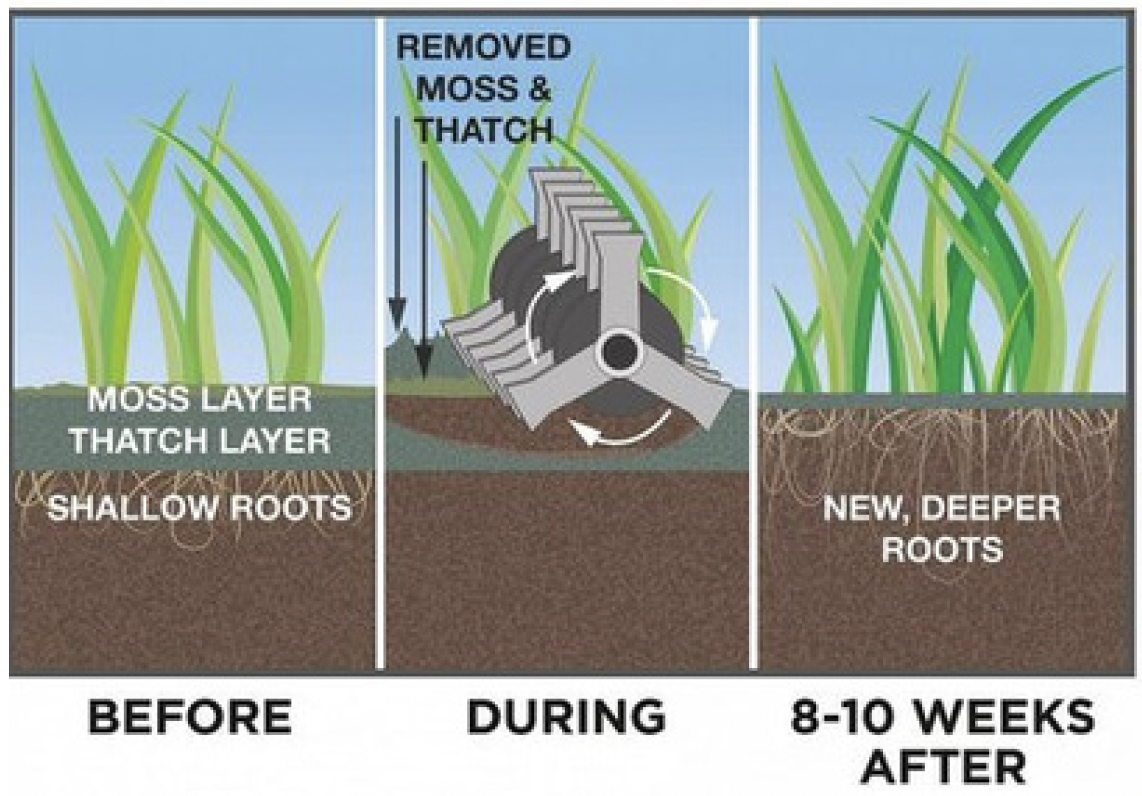Scarification is a cultural lawn treatment which involves more specialist work on your lawn.
Why Scarify?
It could be for a variety of reasons and is not exclusively for the management and removal of thatch, all cultural treatments allow air and water to get to the roots and improve the lawns health.
The Lawnologist will use a specialist commercial petrol machine, which uses vertical blades to cut through dead organic matter and horizontal shoot growth up to 5mm below the surface. When horizontal shoots are cut they re-sprout leading to a denser sward. As this is an intensive procedure we normally complete this treatment at selected times during the Spring and Autumn, when conditions are suitable for the lawn to easily recover.
The dead organic matter is raked from the lawn, and bagged ready for disposal.
Different lawns produce thatch at different rates depending on their condition, grass mix, aspect and soil make up. As a rule we recommend scarifying fine grassed lawns annually, however some lawns may need it twice a year in Spring and Autumn, we will let you know what your lawn requires.
Thatch should not be confused with a thick moss layer, although the two often intertwine. This is because the thatch layer traps water at the surface of the soil providing the right conditions for moss to prevail. Scarification helps break the thatch down and starts to remove it from the lawn surface, therefore eliminating the environment for moss growth.
A small thatch layer of less than 10mm is beneficial, as it insulates the soil from extremes in temperature. However, it starts to become a problem when over 10mm, when the soils natural, beneficial bacteria which help break down thatch, cannot keep up.
So, in short, Scarification removes decaying material, thus encouraging thicker sward. It opens channels for water, air and nutrients to the roots and will boost the microbial activity
It also offers additional control of problematic annual weeds and weed grasses

